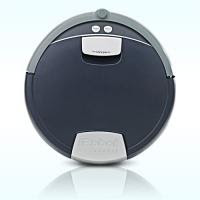First, the market:
As the home-buying season begins in earnest in many parts of the country, Southeast Florida – which enjoyed an unusually mild winter, to the dismay of many including me – continues on its path of odd market behaviour, namely rapidly shrinking inventory accompanied by mildly rising asking and selling prices.
As dramatic as the numbers for single family home sales are, looking at the Tri-County area won't tell the whole picture, so I will briefly point out some of the differences between Palm Beach, Broward and Miami-Dade.
Inventory: Palm Beach is the shrinkage leader, with 4.6 months (means: at the current speed of sales, there would be no more homes for sale in 4.6 months. A balanced inventory is assumed at approx. six months), followed by Dade with 5.3. and Broward with 6.7 months. All three counties show a substantial decrease month over month as well as compared to last year.
Asking prices: Palm Beach is the most expensive at $399,000 (median asking prices of all single family homes), then Dade with $320,000 and Broward at $289,000. The same goes for asking prices per sf, ranging from $164/sf to $143/sf.
Selling prices: Here is where it gets interesting. Palm Beach median selling prices beat Broward only by the width of an eyelash, with Dade at the end. So, what happened to those higher asking prices in Palm Beach?
Pouffff!
Buyers in Palm Beach simply did not honour the seller's demands. They beat them down or flocked to Broward, where houses in March sold faster and at 5 percent higher price per sf than in Palm Beach (or Dade). Interesting, no? Note to sellers and their Realtors: this is not a Seller's Market, despite the lack of selection in certain areas as well as prices brackets.
This week by the way I learned that Realtors© – but not the public – will very soon have access to monthly market data by zip code. That indeed is lovely and constitutes an excellent research tool. The FAR (Florida Association of Realtors©) has contracted with a research firm to supply those data to its members; when the data bonanza begins I do not know yet.
OT: A Mac Virus
The thing is called Flashback, technically not a virus but malware. Read on cnet.com what's it all about and what you can do against it, in case you use Macs and haven't taken any counter measures yet.
But wait – there's more!
The German news weekly Der Spiegel has even more detailed recommendations than cnet, but you have to read German to make real use of the article.
However, two recommendations from the Spiegel piece are worth mentioning:
1. the free Sophos Antivirus tool works very well,
2. my browsing experience with the recommended "NoScript" Firefox extension – blocking Java scripts on your web pages which is Flashback's method of infiltration – is less than enjoyable.
Actually, it's a pain in the butt.
Worth it? Highly likely. Will I keep it? Dunno yet.









